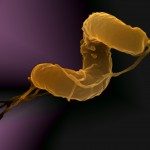Link to Pubmed [PMID] – 33069933
Link to DOI – S1769-7212(20)30799-010.1016/j.ejmg.2020.104089
Eur J Med Genet 2020 Oct; 63(12): 104089
Genetic testing is currently the leading edge of clinical care when it comes to diagnostics. However, many questions remain unanswered even when employing next-generation sequencing techniques due to our inability to decode genetic variations and our limited repertoire of available diagnoses. Accordingly, diagnostic yields for current genomic screenings are <50% and fail to provide the whole picture, leaving the remaining patients without a definitive diagnosis. Human phenotypic/disease expression is explained by alterations not only at the genome, but also at the transcriptome, proteome and metabolome levels. These "higher" complexity levels represent at wealth of information, and diagnostic screenings tests at these levels have been shown to significantly improve diagnostic yields in specific populations compared to conventional diagnostic workup or gold standards in use (7-30% increase in diagnostic yields, depending on the population, approach and gold standard being compared against). However, these are not yet routinely available to clinicians. Due to their dynamic and modifiable nature, tapping into data from different omics will improve our understanding of the pathophysiological bases underlying (many yet to characterize) human disorders. We herein review how alterations at these levels (e.g. post-transcriptional and post-translational) may be pathogenic, how such tests may be implemented and in which situations they are of significant utility.
